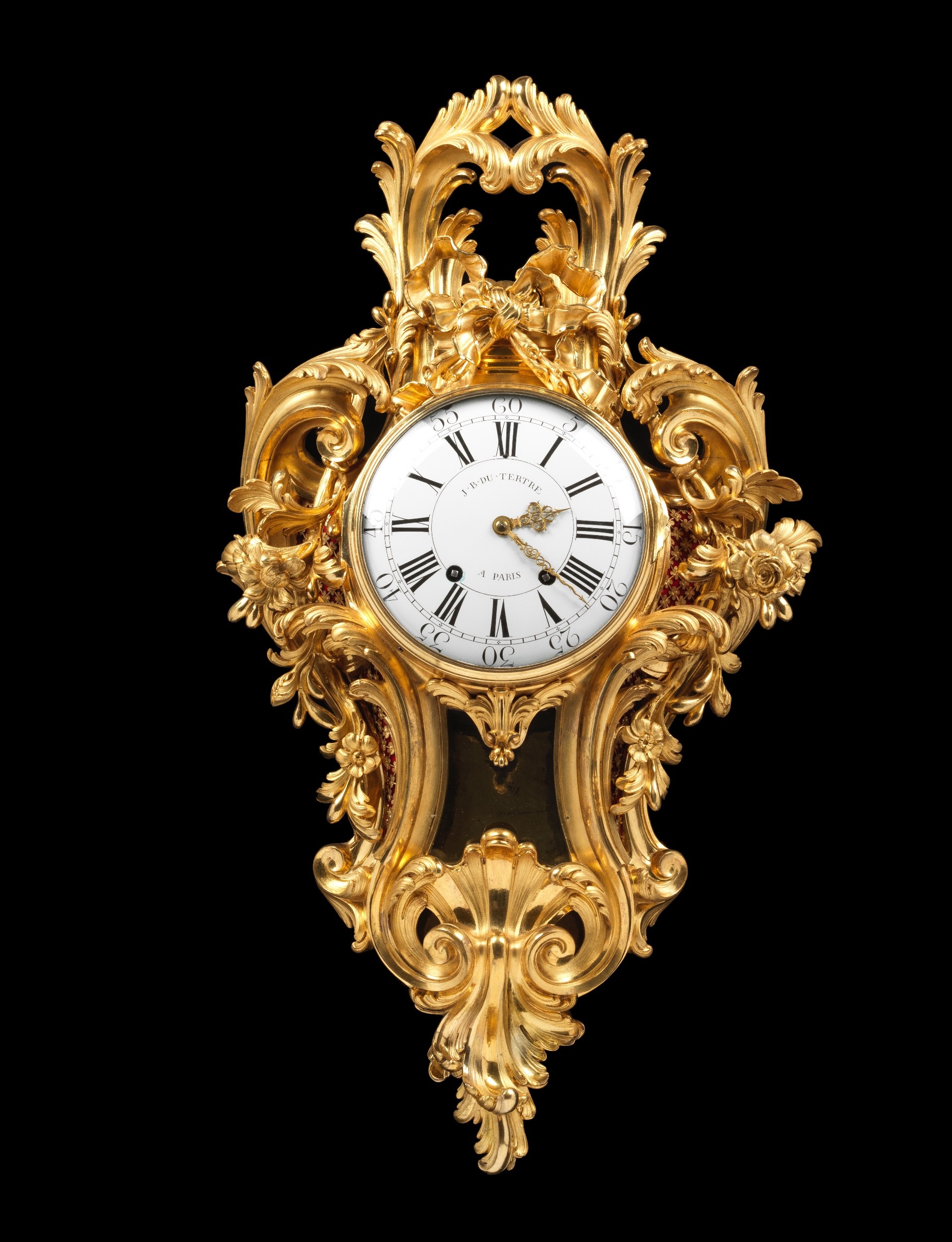
1755-60
A Transitional Louis XV Ormolu Cartel Clock by Jean-Baptiste Dutertre with the Case Stamped by Osmond. Circa 1755

Literature
The design for this cartel, attributed to either Robert Osmond or Pierre-Antoine Foullet and now in the Bibliothèque Doucet, Paris (illustrated in H. Ottomeyer, P. Pröschel et al., Vergoldete Bronzen, p. 184, fig. 3.8.8.), is thought to have been taken up by Robert Osmond between 1755 and 1760.
This clock is illustrated in H. Ottomeyer, P. Pröschel op.cit., Munich, 1986, p. 542, fig. 2.
Several identical cartel cases are known, one with a movement by Julien Leroy à Paris, formerly belonging to Prince Paul of Yugoslavia, from the Villa Demidoff, Florence sale, 21-24th April 1969, lot 219 as well as another signed on the dial Moisy à Paris, now in the Musée du Louvre which was bequeathed in 1911 by Count Isaac de Camondo (illustrated in D. Alcouffe, A. Dion-Tenebaum and G. Mabille, “Les bronzes d’Ameublement du Musée du Louvre”, 2004, p. 84, no. 36).
Jean Baptiste Dutertre: Maitre in 1735
Jean Baptiste Dutertre (1715-73) came from a dynasty of master clockmakers. He was the son and successor of Jean-Baptiste I (1684-1734) and brother of Jean-Abraham (maître 1739, d. 1778) and Nicolas-Charles (1715-93). Received as a maître-horloger in 1735, he continued his father’s business at Quai des Orfèvres. In 1742 he presented a clock and a watch with equation to the Académie Royale des Sciences, Paris. His work was owned by many eminent collectors including the Spanish royal family, the marquis de Marigny and de Béringhen, the duc de Penthièvre and the duchesse de Mazarin. Today one can find examples of his work at the Musées des Arts Décoratifs in Lyon, de Jacquemart-André at Fontaine-Chaalis and Lazienski Palace, Warsaw.
Measurements
| Dimensions | CM | Inches |
|---|---|---|
| Width: | 56 | 22 |
| Height: | 94 | 37 |